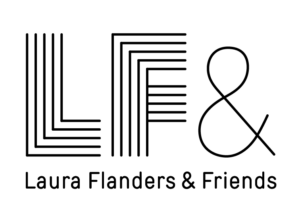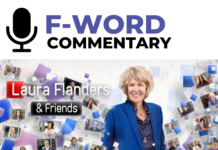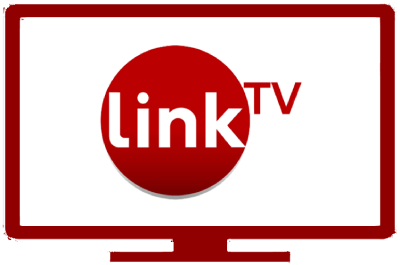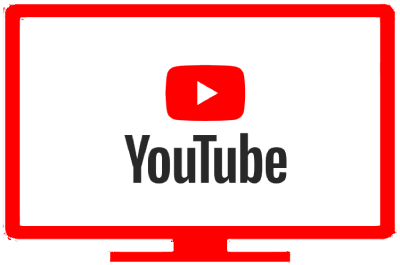Senior editor for theBody.com and BodyProHIV Kenyon Farrow sits down with Laura Flanders to discuss the racial and economic implications of COVID-19 as well as lessons from the AIDS epidemic. He examines the US government’s response to this pandemic and the effects of a fractured infrastructure on the most vulnerable communities. What does this global crisis reveal about our relationship to each other and what steps can communities take to empower and learn about this virus? Are there lessons from the AIDS epidemic or the Spanish flu epidemic in 1918 that can help us improve our response?
Transcript
Laura Flanders:
I’m here with Kenyon Farrow from thebody.com, and a few days ago, I got an email from Kenyon saying, “Let me talk about what’s going on with respect to COVID-19—the coronavirus. So, mission accomplished. Kenyon, welcome back.
Kenyon Farrow:
Thank you, glad to be here.
Laura Flanders:
You’ve been following this closely, it’s part of your business, and also part of your life. What are you thinking?
Kenyon Farrow:
I think that one of the problems right now is that we’re not getting the kind of accurate information from the federal government—from our local and state officials—about the severity of what’s happening. Therefore the inertia to put the public health controls in place, to wait out the window period so that people could not be transmitting the virus. We don’t have enough tests, and so we don’t have these things in place, and so therefore there’s kind of a mix of panic and a kind of people not really understanding what’s going on, so therefore not maybe taking some of these measures seriously. So I think we have both, a kind of an infrastructure problem, political inertia, and then the communication issue in terms of telling the public what’s really going on and what they can do.
Laura Flanders:
Two questions. The first, what is this revealing about our society? And then the second, what of all of this has echoes of the past and the experience that we all lived through with AIDS/HIV, and are there lessons from that period for this one?
Kenyon Farrow:
I think what it reveals about our society is that—and to sound very hippie about it—we’re all very connected, and we live in a more connected world than ever. So the fact that there is no borders in a sense that you can stop an infectious disease from spreading, right. So I think that that is one of the things.
Laura Flanders:
I mean, even Donald Trump’s wall, his putative wall…
Kenyon Farrow:
That wall will not protect us at all. And, actually, it exposes that. It also exposes the lack of just infrastructure that we have to be able to take care of people. The fact that we don’t have a single-payer Medicare for All where everybody has coverage if you live in this country so people can just get access to care. We actually don’t even have enough tests—we’re not testing enough people to find out who’s sick, so it exposes some gaps there. And then also it exposes things like paid sick leave that we don’t have federal laws for. Those things where people could stay home and not worry about not being able to meet bills if they had to, in fact, stay home. So I think it exposes some of those gaps, and particularly in this election season, people really need to be paying attention to the candidates they support at every level who are going to support these kinds of initiatives. Because we haven’t seen this kind of an epidemic or pandemic at this point in the United States in a long time, I think people have kind of forgotten how terrible this can be. So I think, to me, those are some of the major lessons that we have to really learn.
Laura Flanders:
Echoes from the past? Lessons from the past?
Kenyon Farrow:
I think there are some lessons, partly from the AIDS epidemic, but even going further back, you know in terms of the Spanish flue in 1918…
Laura Flanders:
You were not alive.
Kenyon Farrow:
I was not alive. But in some ways, that was also slightly more analogous, but I think in terms of the AIDS epidemic, which people probably, obviously have a more close memory of, ways in which it is similar… We had a period in which it was clear that an infectious disease was happening that was initially blamed on a community. So, initially, the fact that we called it “gay-related” immune problem—what is a gay-related immune problem, right? That doesn’t make any sense. That was what it was called for some period of time, months or a year, until we realized it was human immunodeficiency virus that was causing the illness, and that people did not have to be gay in order to contract it. So I think we have those lessons to learn. We also have the lessons to learn that governments actually have to tell the truth, and they have to tell the truth to people rapidly. And we just heard today, just before I got here, that, in another news outlet, that apparently the White House officials have tried to make all briefings about coronavirus to them from the other federal agencies classified. So therefore CDC director, HHS director, Tony Fauci at NIH, can’t actually talk to the public or share what they’re learning about how the virus is moving, how quickly, what else people need to know. New cases may expose some other sorts of groups at risk or whatever. And so I think we’re learning that those lessons are kind of being repeated again if we remember the fact that Ronald Reagan didn’t want to talk about AIDS, in this case because of his own homophobia. But government inaction can actually make a problem spread even faster.
Laura Flanders:
The flip side of the AIDS story was that activism moved in, and we transformed the relationship of the patients to the experts. Flipped it in many circumstances. What’s applicable from that experience, that side of the story?
Kenyon Farrow:
What’s applicable in AIDS activism in the current situation is that people have to empower themselves to learn about this epidemic where government is failing. And people also have to demand certain actions be taken. And that is actually beginning to happen, and actually, some of our noted AIDS activists are actually already moving in terms of they’re engaging both the city, the state, and the federal government about not moving fast enough in terms of alerting people to what the real dangers are, and both for people who might be at risk for contracting, but just for many of us who might contract but might not get sick—we may still transmit it to people who do. And so not communicating those things. And also about people who are particularly vulnerable. So senior citizens, people who are homeless, people who are otherwise don’t have great social support networks and who don’t have necessarily access to certain kinds of care, truly push for infrastructure to be put in place so that everyone can be taken care of. I think that that piece of activism that happened then, that it’s beginning to happen and definitely needs to move forward.
Laura Flanders:
So, interestingly, in an era of divide, divide, divide—us, them, us—the virus is calling us to remember there’s just an us.
Kenyon Farrow:
Just an us. And then, if you think that, you know, something couldn’t happen to you, or it’s just those people over there, that an infectious disease often can remind us that we are far more connected than we sometimes want to think that we are, and that investing in things that may support people who are more vulnerable than you are actually may benefit them and you.
















